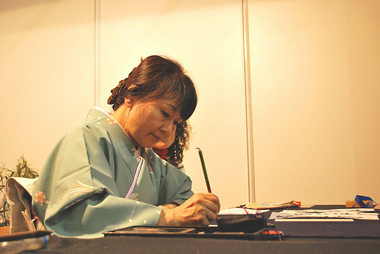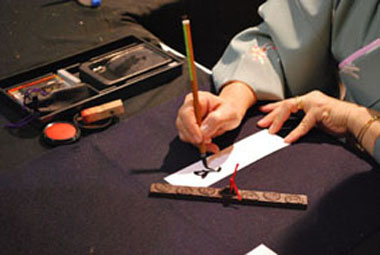Nihon jaia
Shodō demonstration and Workshop
The Shodō (书 道) or Japanese calligraphy comes from China, and is practiced with a brush, ink, paperweight and a sheet of rice paper. Shodō focuses on the optimal way of writing Japanese characters, hiragana and katakana, and kanji characters derived from Chinese writing. The art of calligraphy, known originally as karayō (唐 様), was introduced in Japan around the sixth century and has continued until the present. Japanese Calligraphy has been imbued with the principles of Zen thought. The calligrapher, for instance, only can write in any piece of paper only once, being unable to correct their brushstrokes. Through Zen Japanese calligraphy has been connected with other expressions of Japanese aesthetics, of which it is important to highlight the tea ceremony, insofar as in its prelude it is considered mandatory to contemplate a work of Shodō in order to clear the mind.
Activity in the Festival:
Shodō demonstration and workshops during the two days of the Festival.
Master Eiko Kishi
Bachelor and Master of Arts in Psychology, Master Eko Kishi is a pioneer in the introduction of certain branches of Japanese culture in the Spanish state. She is one of the founders of the Spanish Association of Ikebana and Ikebana International Spain Castellana Chapter. At the present, she holds as vice president of both entities. She is also Vice President of the Japanese Community Association of Madrid and master of Ikebana Misho-ryu Japanese school. Since the early 90s has been taking part and organizing numerous exhibitions of ikebana, tea ceremony demonstrations and specific workshops of Japanese calligraphy.
More information about Shodō:





